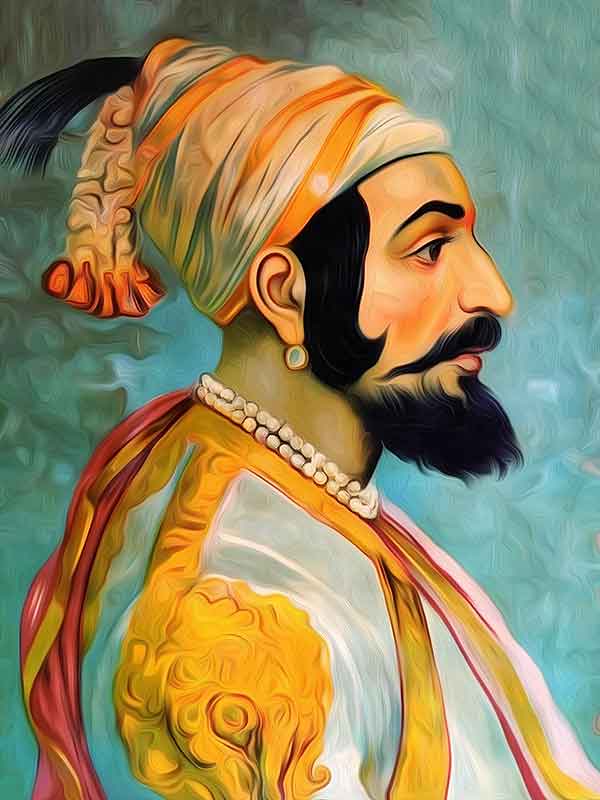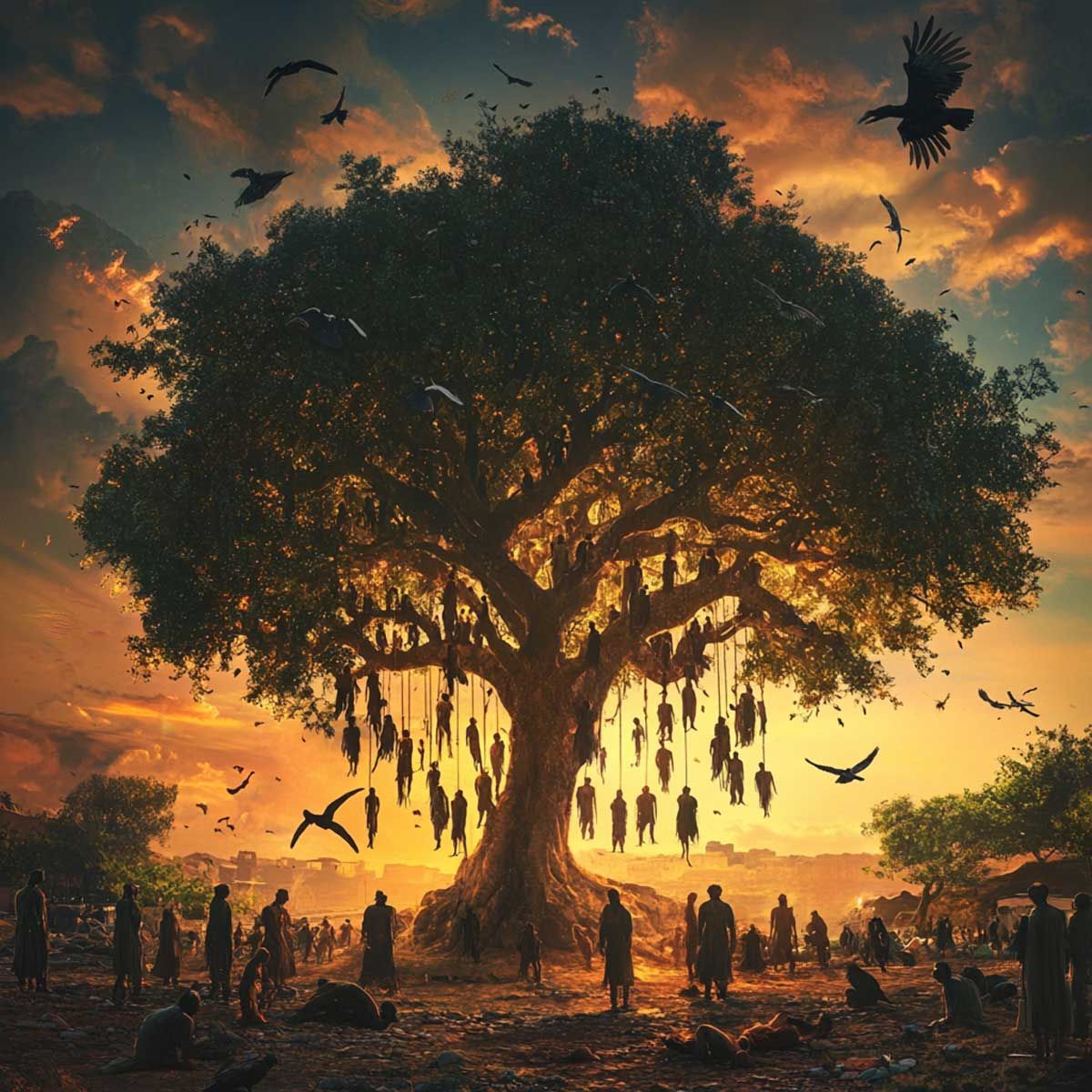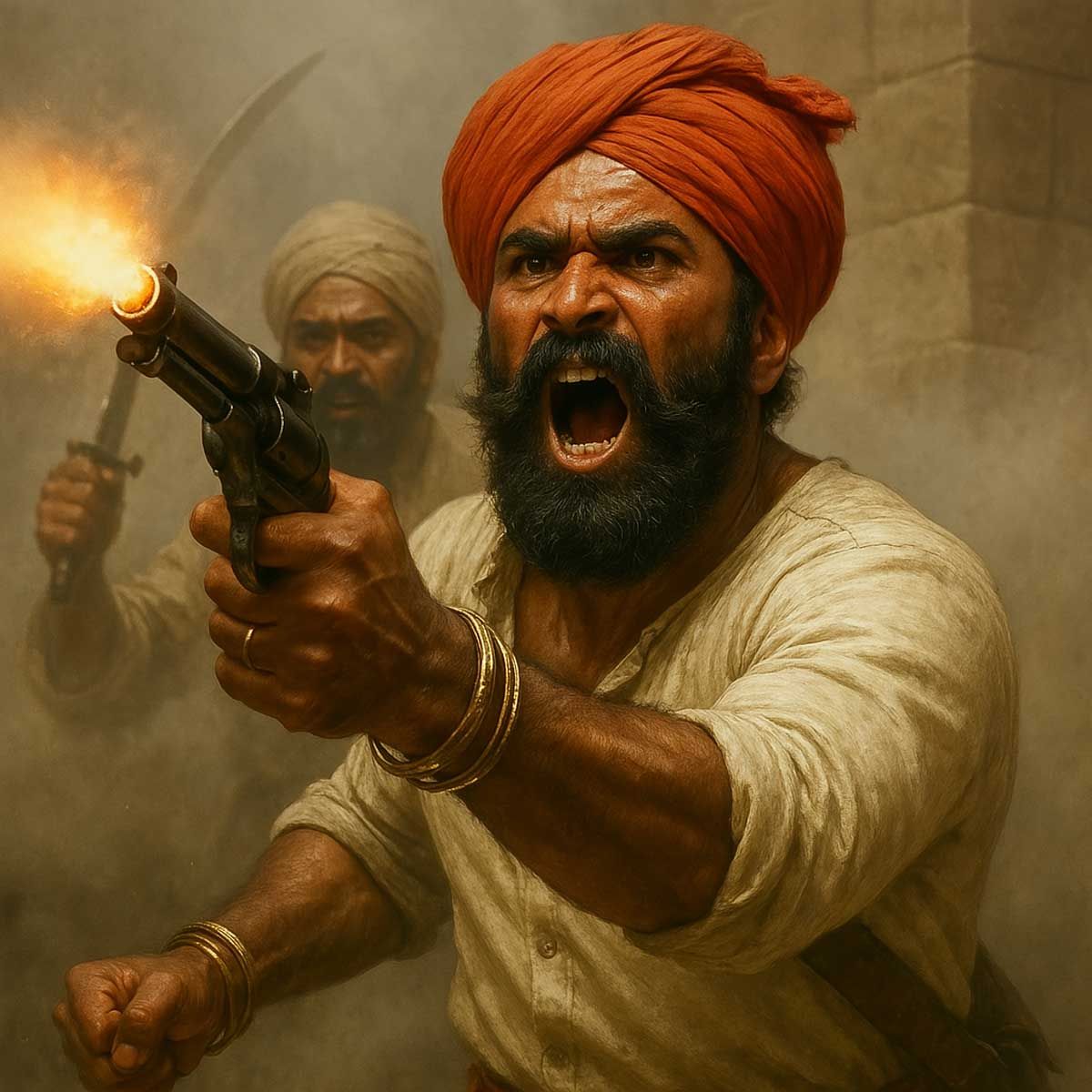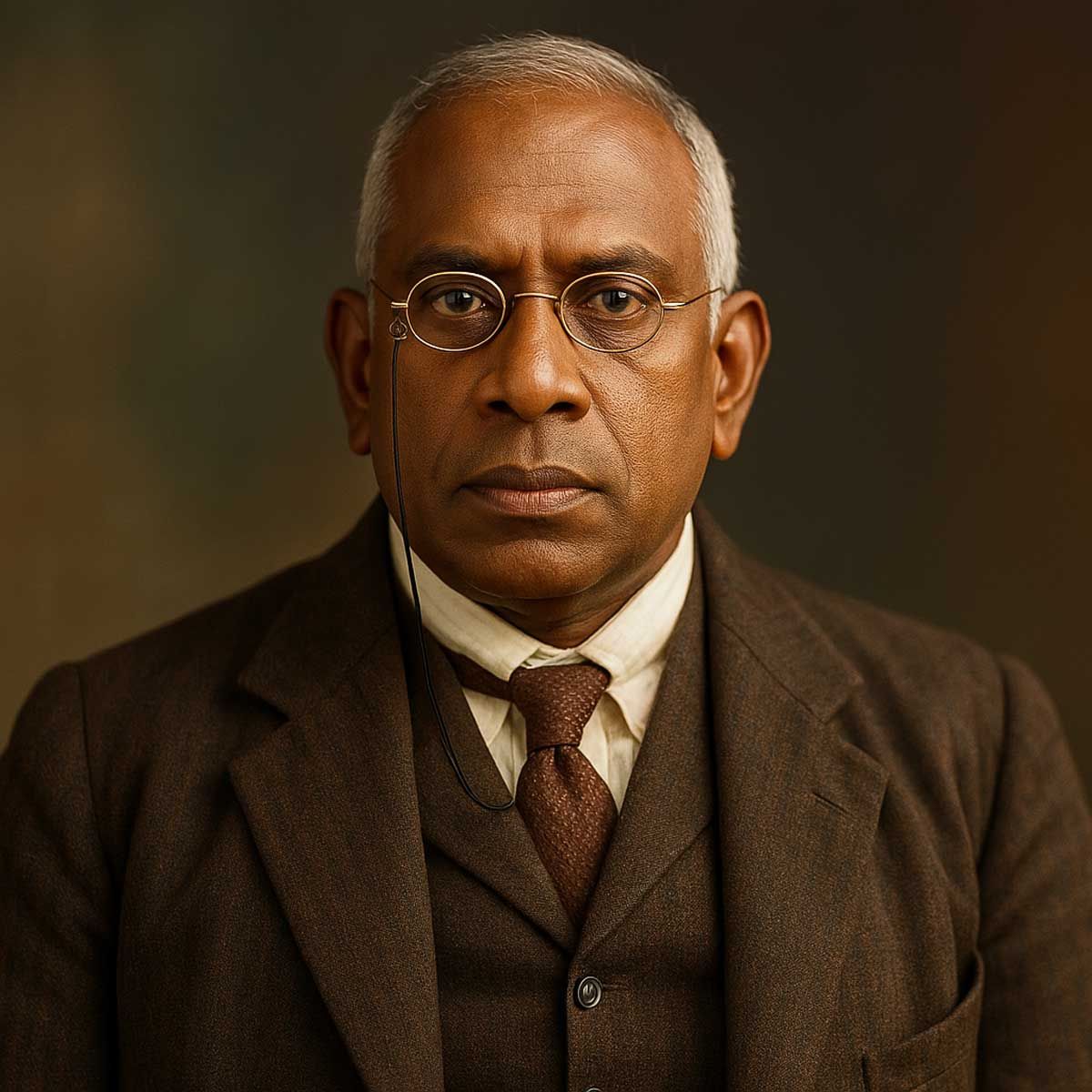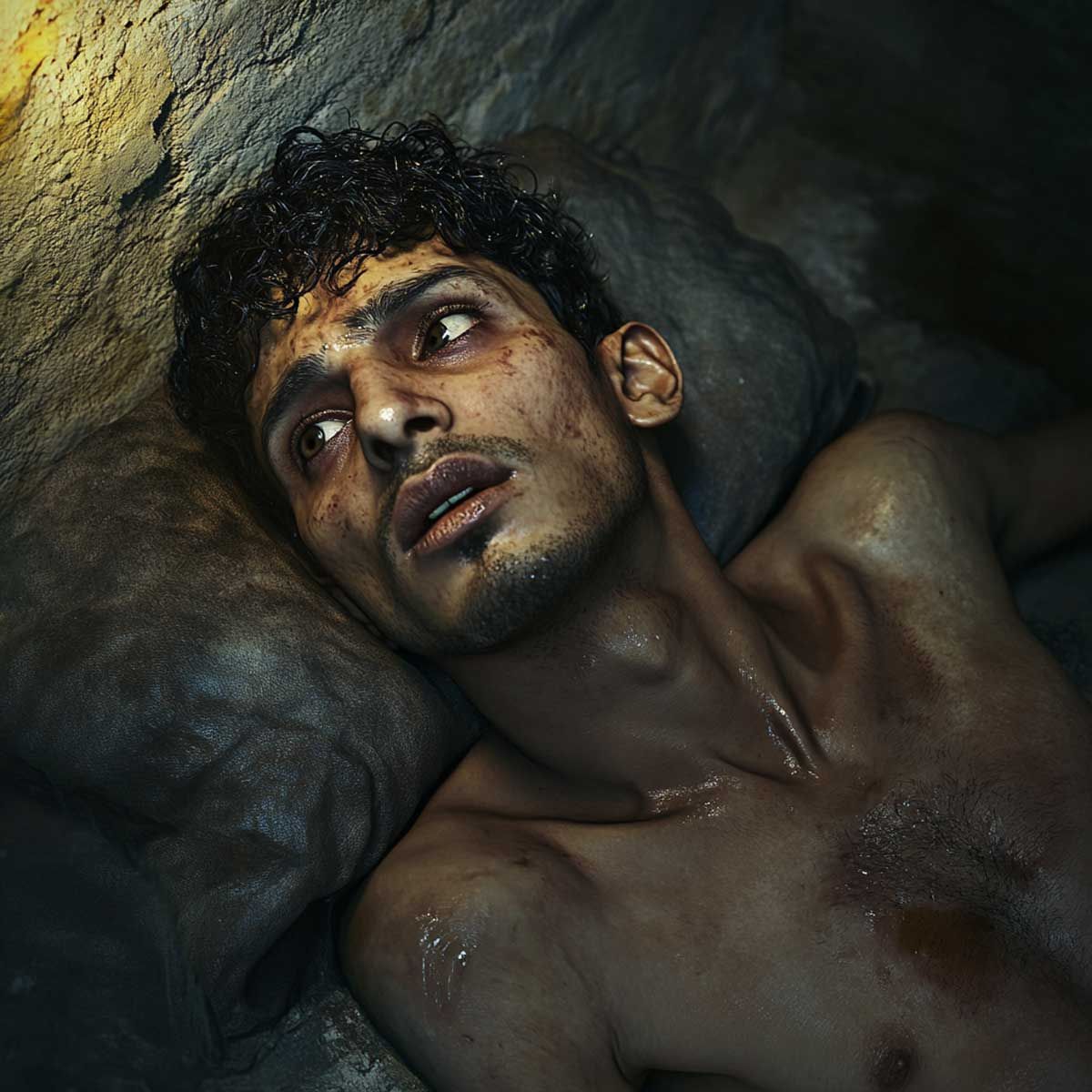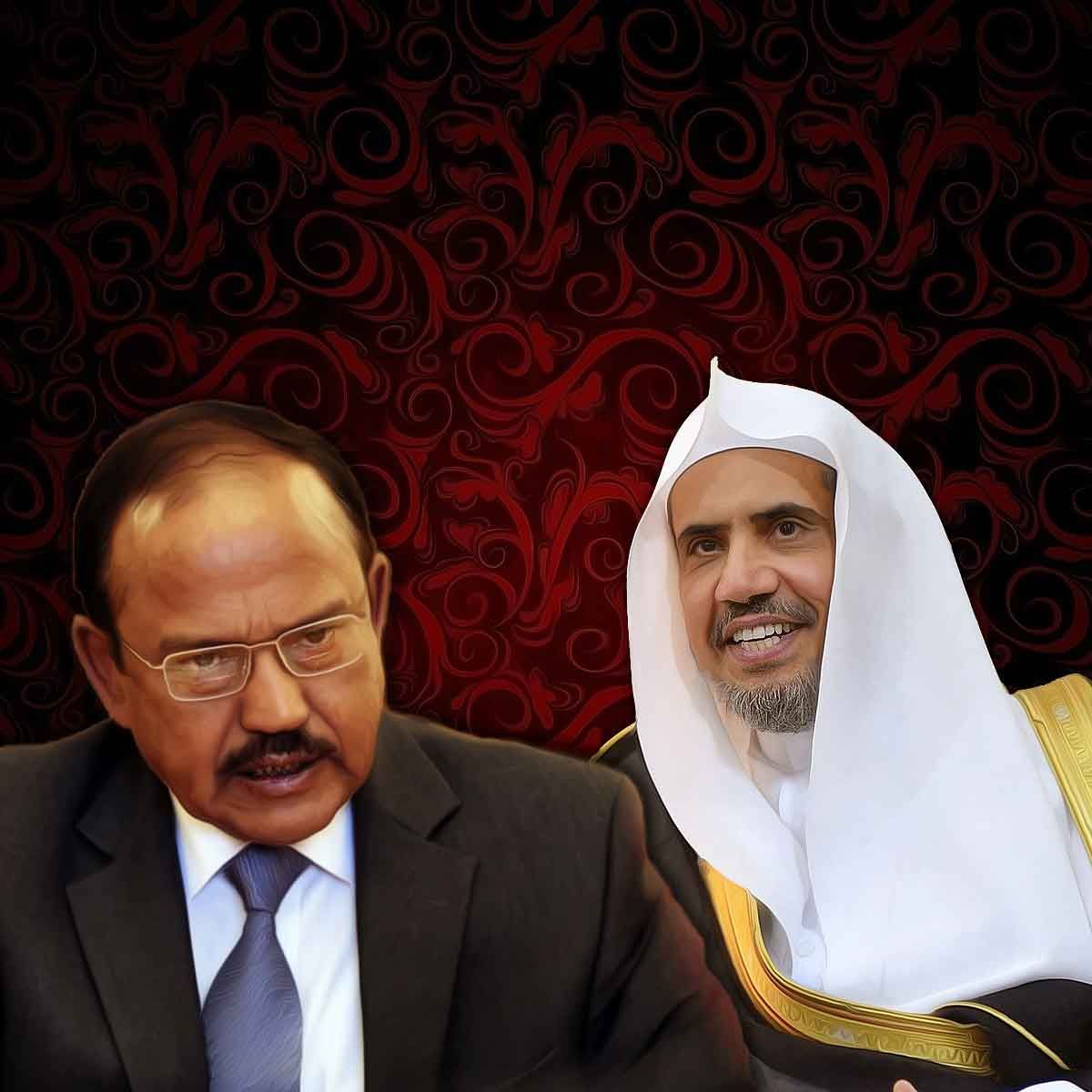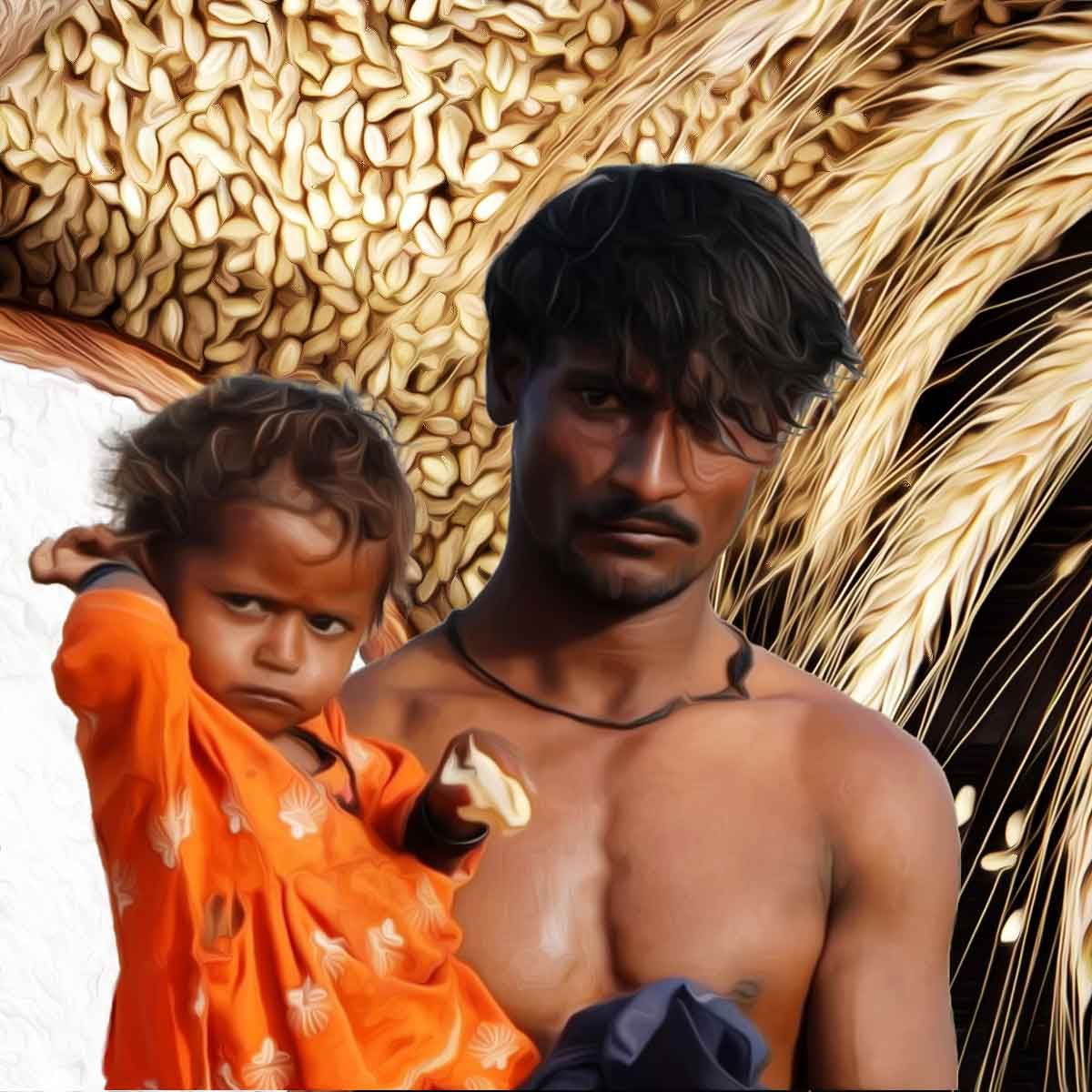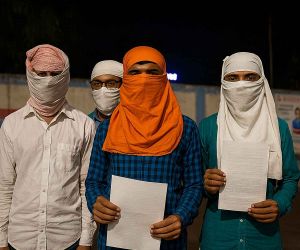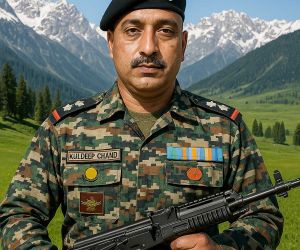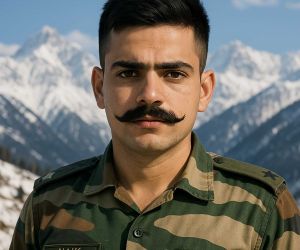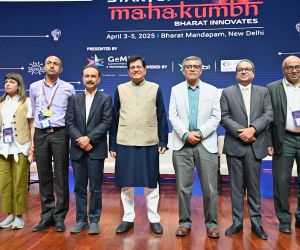MORE COVERAGE
Twitter Coverage
Satyaagrah
Written on
Satyaagrah
Written on
Satyaagrah
Written on
Satyaagrah
Written on
Satyaagrah
Written on
JOIN SATYAAGRAH SOCIAL MEDIA
Who is this fearless daughter of Balochistan whose voice shakes power—Mahrang Baloch, jailed yet unbroken, led a 1,600-km march, earned TIME100, Nobel nod, and rose as the face of peaceful resistance against enforced disappearances in Pakistan
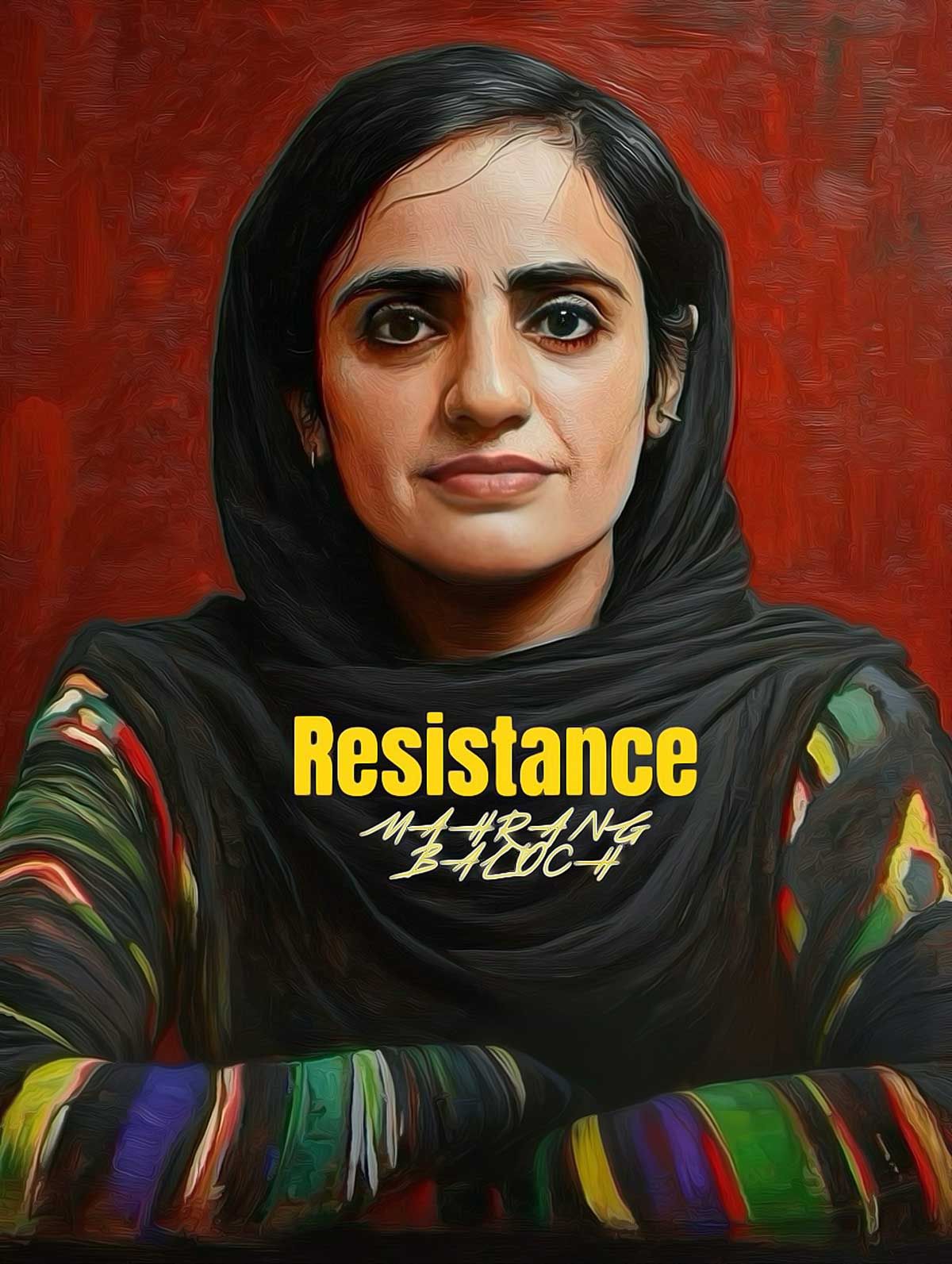
She walks unarmed, but her voice slices through fear like a blade. She carries no weapon, yet the generals in Rawalpindi whisper her name with discomfort. In the dusty alleys of Kalat and the silence of Quetta’s prisons, one name echoes across generations of the oppressed — Mahrang Baloch.
Who is this woman whose presence sends shivers down the spines of uniformed men?
Who is this daughter of Balochistan who walks with the weight of her people’s wounds, yet refuses to kneel?
|
Born on February 3, 1993, in Kalat, a heartland of Baloch pride and pain, Mahrang didn’t choose resistance — resistance chose her. Her father, Abdul Ghaffar Lango (or Langov), was not a quiet man. He spoke boldly against the atrocities faced by the Baloch people. He didn’t fade into fear. And that is likely why the Pakistani state decided to silence him.
In December 2009, when Mahrang was just 16, her father was abducted by Pakistani security forces on his way to a hospital in Karachi. What happened next would have shattered most teenagers. But Mahrang was not like most.
Defying tribal customs that warned women to stay indoors, Mahrang took to the streets. Not as a victim — but as a storm. She blocked roads, stood in front of police vans, and wept on pavements, screaming for her father’s return. The elders called her defiant. The state called her trouble. But the people? They began to call her “hope.”
The family searched relentlessly. For over a year, they lived with dread. Until one night in July 2011, their nightmare took its final shape. Her father’s tortured body was found, bullet-riddled, still in the clothes he had worn on the day of his kidnapping.
“My brother fainted when he saw him,” Mahrang’s younger sister Nadia would later whisper.
The death of her father didn’t just change her — it created her. As the eldest child, Mahrang picked up the shattered pieces of her family and held them together. She stepped into her father’s role. “Mahrang replaced our father,” her family said, as she supported them with what little she earned from her medical scholarship.
There were no safety nets. Only willpower. Only the unyielding decision that her father’s struggle would not die with him.
From a jail cell, years later, she would write with clarity:
“Our father made the decision for us when he dedicated himself to Baloch rights. And after him, we all embraced his philosophy and committed ourselves to this struggle.”
That philosophy — of resistance, dignity, and voice — would soon shake the country that tried to silence her.
Between Books and Banners: The Making of a Doctor and a Dissenter (2011–2017)
Most young girls mourning a father’s execution might retreat into silence. Mahrang Baloch enrolled in Bolan Medical College, Quetta, and became a doctor. While dissecting human anatomy in class, she dissected state-sponsored cruelty in public.
Even as she carried textbooks, she also carried protest placards. When others studied pathology, she studied pain.
“School has always been my favorite place... I never took education as something I had to do, but rather as something I loved,” she once said. Her love for knowledge was not separate from her activism — it was fuel for it.
Photographs from her student years show Mahrang standing before crowds, behind her large banners with portraits of the missing — the sons and brothers swallowed by Balochistan’s silence. Her activism was loud, but always peaceful. Her defiance was firm, yet always moral.
But the cycle of state cruelty wasn’t done with her family. In December 2017, Nasir Baloch, her younger brother, was also abducted by security forces. For Mahrang, it was déjà vu with a deeper burn.
“I realized that no one was safe. It was the turning point in my life,” she said later. From that moment, the doctor became a full-time dissenter.
The press ignored her, but Mahrang was not about to let that stop her fight. She turned to Twitter.
“The local media gave us no coverage, so social media was the only platform left... The first tweet I put out was about my brother’s enforced disappearance.”
She tweeted. She rallied. And this time, the world heard her.
Three months later, Nasir was released. Many believe it was because of the digital pressure she created — a rare miracle in Balochistan’s grim history of disappearances. The experience left her with a new lesson — a voice raised loudly and fearlessly could change fates.
Exiled activist Naseem Baloch summed it up best:
“Mahrang led the way and succeeded in having her brother released, so now families dare to denounce these kidnappings.”
She didn’t just save her brother. She gave courage to countless others.
By publicly accusing the security services of Nasir’s abduction, she shattered a taboo — the one that said Baloch must suffer in silence.
In the face of tanks, bullets, and midnight raids, Mahrang stood tall. In her quiet strength and fierce resolve, Balochistan found a daughter it would never forget — and a regime found a voice it could not break.
|
The Rise of a Movement: How Mahrang Baloch Turned Grief into Grassroots Power
After the painful return of her abducted brother in early 2018, Mahrang Baloch could have chosen to step back, to heal privately, and retreat into silence. But the fire that had been lit inside her didn’t dim—it intensified. Rather than taking a moment of personal relief, she transformed it into collective responsibility. She used her brother’s return not as closure but as a beginning.
In 2019, alongside fellow young Baloch activists who were equally tired of waiting for justice, Mahrang co-founded the Baloch Yakjehti Committee (BYC)—a name that translates to “Baloch Solidarity Committee.” This committee was not born in boardrooms or through political endorsements. It was built from the bottom up, created to unite families of the disappeared, victims of enforced disappearances, extrajudicial killings, and arbitrary arrests—crimes that had long tormented the region.
“Mahrang founded the Baloch Unity Committee (BYC) after her brother disappeared for four months in 2018 to mobilize the relatives of victims of alleged extrajudicial executions, enforced disappearances, and other arbitrary arrests,” noted an AFP report on her life.
Under her leadership, BYC grew rapidly into a grassroots force. It was no longer just a group of mourners—it was a network of citizens determined to turn suffering into strength. What made it powerful was its reach. Students, women, village elders—everyone had a place in Mahrang’s growing circle of resistance. They organized community meetings, knocked on doors, and talked directly to the youth, especially young Baloch girls, about their legal rights, about justice, about the power of simply raising one’s voice.
This wasn’t just about fighting the state; it was about teaching people how not to be afraid anymore.
From day one, Mahrang set a strict tone for the BYC: no violence, no hatred. In a region often overshadowed by the Balochistan Liberation Army’s armed insurgency, her voice stood out as calm but firm. She did not hide from criticism, nor did she follow the easy path of retaliation.
“We strongly condemn violence against any person, irrespective of their ethnicity or political beliefs,” she declared, firmly rejecting the idea of militant rebellion.
Her alternative was something more difficult—but more hopeful: lawful protests, hunger strikes, long marches, and peaceful sit-ins. She believed in holding the government accountable, not through force, but through its own laws and constitution.
“For me the most progressive aspect of our resistance is that thousands of women across generations... have joined the cause,” Mahrang said proudly.
Indeed, this may have been one of her greatest successes. For the first time in memory, grandmothers, mothers, and schoolgirls marched together, some wearing traditional burqas, others holding photos of missing sons, all united by one young woman’s courage. In deeply conservative Baloch society, the sight of women coming together in protest was rare. But behind Mahrang, they found strength. And in her words, they found a reflection of their pain—and their hope.
Peaceful But Powerful: Mahrang's Bold Stand Against Fear (2019–2021)
By now, Mahrang Baloch was no longer just a medical student or a grieving daughter. She had become a force on the streets, a name that echoed in whispers and in chants. In 2019, her leadership was tested in one of the boldest campaigns of her early career.
That year, a disturbing scandal erupted at the University of Balochistan: officials were secretly filming female students on campus to later blackmail and harass them. The revelations shook the student body—but few dared to speak. Mahrang did.
She rallied students, led protests, and publicly challenged the university’s administration. It wasn’t just about hidden cameras—it was about the right of every Baloch girl to study without fear. She made her point clear:
“I realized as a woman that if they would not let us get an education, then what really is left?”
The protests grew stronger, louder. Eventually, the pressure forced the vice chancellor to resign in disgrace—a rare victory in a country where accountability is elusive. It showed what peaceful, consistent action could achieve under a leader like Mahrang.
In 2020, she faced another challenge. The provincial government proposed eliminating affirmative action quotas that had long reserved seats in medical colleges for students from remote and underdeveloped districts. For rural Baloch students, these quotas were a lifeline. Removing them meant shutting the door to medical education altogether.
Mahrang didn’t wait. Alongside her fellow students, she led rallies, spoke to media, and even organized a hunger strike outside the Governor’s House in Quetta. It was a peaceful protest, but it made power extremely uncomfortable.
She was called in for a meeting with Education Minister Sardar Yar Mohammad Rind, a tribal chief with both political authority and cultural power. What happened in that room made headlines:
The minister told her “respectable women don’t protest” and tried to silence her.
But Mahrang didn’t shrink. She didn’t flinch. She answered with the quiet rage of someone who had carried too many injustices for too long. She told him directly it was his job to listen, and scolded him for insulting the women of Balochistan.
That confrontation made history. For many in the province, it was the first time they saw a young woman stand up so openly to a tribal patriarch in power—and win.
“I did not expect the positive response I got from the people of Balochistan for speaking up against the tribal chief,” Mahrang said later.
Indeed, locals admired her bravery, not just for her cause but for her audacity to challenge the feudal mindset that had long suffocated Baloch society.
And she didn’t just win hearts—she won policy. The government caved. After weeks of protest and public pressure, the authorities announced that the Bolan Medical College Act would be amended, and the district quota system would remain intact.
It was not just a victory for education. It was a victory for people power, for peaceful resistance, for the belief that even the state can listen if the people speak with enough unity.
By 2021, her impact was no longer local. Her name was being written in columns, spoken at protests, and remembered in villages.
“She has won our hearts and minds,” said a 26-year-old attendee at one of BYC’s rallies.
And indeed, Mahrang Baloch had become what many thought impossible in Balochistan—a woman who led, who resisted, and who united. Her image now stood for hope, non-violence, and courage.
By the end of that year, she was recognized across the province as “the face of Baloch resistance”—not through bloodshed, but through dignity, intellect, and iron resolve.
6️⃣📍 The Gwadar Sit-In That Became a Stand for History
— Satyaagrah (@satyaagrahindia) May 14, 2025
• July 2024: Thousands tried to reach Gwadar for “Baloch Raaji Muchi.”
• Govt blocked roads, cut internet, and shut the city — but people still came.
• Mahrang gave her speech from a truck — “not even a pot plant was… pic.twitter.com/bd9vgOwhPf
The Long March to Justice: How Mahrang Baloch Led a Nation in Mourning
By 2022, Mahrang Baloch was no longer just the voice of student protests—she had become the symbol of an entire people's pain. As her influence grew, so did her courage. No longer confined to university gates, Mahrang expanded her battle to the larger crisis of enforced disappearances that haunted nearly every home in Balochistan.
That same year, and again in 2023, Mahrang—through the Baloch Yakjehti Committee—began organizing something the region had never seen before: Long Marches. These were not just political protests—they were long, exhausting, soul-stirring journeys led by the wives, mothers, and daughters of the disappeared.
And in December 2023, she made history. Mahrang led hundreds of Baloch women on a 1,600-kilometer march, starting from Turbat, a town in southern Balochistan, all the way to Islamabad, the capital of Pakistan.
It wasn’t a march of slogans and flags. It was a caravan of sorrow, with each step soaked in grief and hope. These were women who walked not for fame, not for politics, but for answers—for the return of sons who vanished in the dark, for justice that had long been denied.
Their mission was simple but powerful: to demand justice for a young Baloch man allegedly killed extrajudicially, and to hold the government accountable for the thousands of missing Baloch citizens.
As they passed through towns and villages, people emerged from homes to offer support. Children waved. Elders cried. By the time they reached Islamabad, the entire nation was watching.
So were people across the globe. Even prominent figures like Malala Yousafzai and Greta Thunberg tweeted in solidarity with Mahrang and the women walking beside her.
But what should have been a peaceful moment of reckoning was met, once again, with state aggression. Upon reaching Islamabad, police detained many of the marchers. There were no threats, no riots—just silent women with photos in their hands. The government, however, chose handcuffs over dialogue.
Later, under public pressure, the detained protesters were released on bail.
That march—driven by pain, led by love—did more than just grab headlines. It showed all of Pakistan that Balochistan was no longer silent. It reminded the world that Mahrang Baloch was not leading a protest—she was leading a people.
A Sea of Baloch Unity in Gwadar: The Lioness Commands the Crowd (2024)
Empowered by the success of the Long March, Mahrang and the Baloch Yakjehti Committee began planning something even more ambitious. It would be the largest show of unity Balochistan had ever seen.
In mid-2024, they announced the Baloch Raaji Muchi, or the Baloch National Gathering. The idea was radical in its simplicity—bring Baloch people from every corner of the province into one city and let them peacefully protest against state oppression.
They chose Gwadar, the strategic port city on the Arabian Sea. For the government, this choice struck a nerve. Thousands attempted to travel there in late July 2024, but the state panicked. Authorities locked down Gwadar.
Security checkpoints and roadblocks were thrown up. Internet and mobile networks were shut down. Everything possible was done to prevent the rally. But it wasn’t enough.
Despite all odds, huge crowds entered the city. And then, atop the back of a truck—because police refused to allow them a stage—Mahrang Baloch stood and addressed the gathering.
She didn’t shout. She didn’t rage. But her words hit harder than bullets. She urged peace, told the protesters to stay calm, to hold their ground with discipline and dignity.
And they listened. “Believe me, not even a pot plant was destroyed,” said activist Hafeez Baloch. The gathering became a model of peaceful defiance, even as the government’s response turned violent.
Soon after Mahrang’s speech, security forces attacked. They charged with batons and fired tear gas, showing no mercy—not even to women, children, or the elderly. People were injured. Some were arrested. But the people did not run.
Instead, Mahrang and the BYC turned the protest into a sit-in. It lasted nearly two weeks, right there in Gwadar. They slept on the streets. Ate what little they could. And waited.
They refused to leave until every arrested activist was freed, and the government acknowledged their demands. And after 12 days of resistance, the state quietly gave in—releasing the detainees and agreeing to hear their grievances.
It wasn’t just a protest. It was a Baloch revolution in silence.
|
The Day Balochistan Spoke With One Voice
Commentators across Pakistan couldn’t deny what they had witnessed. The Gwadar rally was described as a turning point in Baloch history.
“It was the first time the Baloch had united in such massive numbers to register their protest against state oppression,” Mahrang noted.
She later added that if the state hadn’t blocked roads and shut down networks, “some 200,000 people would have come” to join them.
Even non-Baloch Pakistanis stepped in to support. A local woman from Gwadar recalled how her Punjabi neighbors brought food and water every day, saying they had “never seen so much adulation towards a leader before” as they saw toward Mahrang.
In the following weeks, the BYC kept the momentum alive. They organized more rallies in Turbat, Kalat, Panjgur, and Quetta, and each time thousands poured in. It was a chain reaction of awakening, a growing echo that refused to die down.
At every stop, Mahrang would stand before the crowds, surrounded by photographs of missing sons, husbands, and fathers, and lead them in chants—calling for justice, calling for answers, calling for peace.
“Today, the love and respect we have among our people is a thousand times more powerful than the oppression of Islamabad,” she declared, to roaring applause.
She didn’t need an army. She had her people.
Her words became a rallying cry. Her calm became courage. Her presence alone was a statement.
For many, this marked a moment never seen in decades—a time when a single Baloch woman united a wounded population. It was something new. Something powerful.
And as one Pakistani newspaper wrote, she had now become the “Lioness of Balochistan”—not because she roared the loudest, but because she never backed down.
Persecution and Peaceful Resistance: How the State Fears the Strength of a Peaceful Woman
The more Mahrang Baloch rose as a symbol of hope and defiance, the more the Pakistani state seemed to fear her. By early 2024, her calm but unrelenting voice had shaken the foundations of the official narrative in Balochistan. She wasn’t carrying weapons. She wasn’t raising militias. All she carried was truth — but even that was too much for the state.
The government’s answer to her rising popularity was predictable: criminalize her courage. In Quetta, officials lodged a First Information Report (FIR) accusing her of sedition, claiming her speeches were anti-state and could provoke unrest. It was a charge designed not to punish a crime, but to silence a conscience.
Simultaneously, government spokespersons tried to stain her image, whispering to the media that “foreign powers” might be behind her activism. This was not just a smear—it was a calculated attempt to delegitimize a Baloch-led, Baloch-owned movement that had gained powerful momentum.
But Mahrang didn’t flinch. She faced these accusations not with fear, but with fierce clarity.
She dismissed these charges as baseless fabrications intended to scare her and her colleagues into silence.
And when the state kept pushing, she stood taller.
“They want to intimidate us, but our collective struggle will not stop,” she declared.
That unwavering resolve was not just resistance—it was leadership.
|
International Acclaim, Domestic Chains
By October 2024, the world had started to recognize what Pakistan feared: Mahrang Baloch was a powerful voice for justice, rising from the margins.
Time Magazine named her among the world’s top young changemakers in its “TIME100 Next” list, honoring her for
“advocating peacefully for Baloch rights.”
She was celebrated for her bravery in speaking against enforced disappearances and state violence in Balochistan. It was the kind of recognition that should have made her country proud.
But instead of celebrating her, Pakistan punished her.
When Mahrang arrived at Karachi’s Jinnah International Airport to board a flight to New York for the TIME100 gala, security agents stopped her—without any legal reason. Her passport and phone were confiscated on the spot.
What followed was a disturbing revelation. Authorities had quietly placed her name on the Pakistan National Identity List—a no-fly list usually reserved for criminals, terrorists, or fraud suspects. Her crime? Speaking too loudly for the silent.
Mahrang’s protest was direct and dignified:
“I was unjustly stopped at the airport with no valid reason – a clear violation of my fundamental right to freedom of movement,” she said. She called the travel ban exactly what it was—an attempt to silence Baloch voices internationally.
The backlash was swift. Human rights groups condemned the action.
The Human Rights Commission of Pakistan demanded the ban be lifted and pointed out the cruel irony:
A peaceful rights defender was being treated as a security threat.
Even Mary Lawlor, a United Nations Special Rapporteur, voiced concern about Mahrang’s harassment and intimidation by officials.
But Mahrang didn’t give in. She prepared for legal action. She stood firm and announced:
“This arbitrary travel ban is part of the increasing crackdown on Baloch human rights defenders... I will fight back against this unjust restriction.”
Arrested at Dawn, Tortured in Silence
That crackdown only worsened in 2025. On the morning of March 22, while Mahrang led a peaceful sit-in protest outside a government building in Quetta, calling for justice in yet another case of civilian killings by security forces, the state struck again.
Just before dawn, police raided the protesters. Dozens of activists were beaten, dragged, and taken away. Mahrang herself was manhandled—dragged through the crowd as witnesses looked on in horror.
The authorities didn’t stop at violence. They went further. They claimed—absurdly—that Mahrang and her group had orchestrated violence. They even accused them of attacking a hospital—a charge that local observers completely denied.
And while the police celebrated their crackdown, Nadia Baloch, Mahrang’s sister, stood outside the jail. Her eyes full of pain, she repeated words that felt like a cruel echo from the past:
“First, they imprisoned your father... Now years have passed, but the injustice remains the same. We are once again standing outside the jail.”
The weight of history was unbearable. Once again, a daughter of Balochistan had been thrown into prison for daring to speak.
Mahrang was taken to Quetta’s Central Jail Hudda and kept in harsh conditions. Even her family was not allowed to visit her. Food brought from home was rejected.
Fearing for her health and safety, Mahrang and other detained activists began a hunger strike—a silent scream from within the walls that had caged them.
They refused to eat, not because they wanted death, but because they demanded dignity.
“She is subjected daily to mental torture and coercion to abandon her peaceful movement,” her sister Nadia wrote in a desperate letter to the Chief Justice of Pakistan, pleading for his help.
As of April 2025, Mahrang Baloch remained behind bars. The charges?
Terrorism and sedition—words that had lost their meaning in the face of the state’s desperation to suppress a woman who had never lifted anything more dangerous than a protest sign.
International organizations called the charges fabricated. Her supporters knew the truth—this was not justice. This was retribution.
And yet, even in jail, Mahrang's spirit remained unbroken. She had always known the risks of raising her voice in a land where silence is forced. But she chose the harder path—for the disappeared, for the mothers, for the daughters.
Her imprisonment only proved one thing: she had become too powerful for the state to ignore, too righteous for them to silence, and too loved to be forgotten.
Global Recognition and the Legacy That Refuses to Be Silenced
Even as the walls of jail surround her and the state continues to tighten its grip, the voice of Mahrang Baloch has traveled far beyond Balochistan. While her own government seeks to suppress her, the world watches with admiration. Her courage, her unwavering faith in peaceful protest, and her refusal to surrender have earned her global respect.
In December 2024, the BBC included Mahrang in its prestigious “100 Women” list, recognizing her as one of the most inspiring and influential women of the year for her fearless fight for human rights. It was a moment of pride not only for her but for every woman in Balochistan who has suffered in silence. What made it even more historic was the fact that she became only the second Baloch woman ever to receive this honor.
At the same time, Time magazine’s TIME100 Next list also hailed her as
“one of the 100 rising stars shaping the future,” highlighting how she had stood up for the oppressed in Balochistan through peaceful means.
But as always, Mahrang chose humility over celebration. She didn’t claim the spotlight for herself.
She humbly dedicated these accolades to the “thousands of Baloch mothers and sisters” who have endured injustice, saying the recognition belongs equally to them.
Then came the news that stunned many across activist and human rights circles: in early 2025, Mahrang Baloch was nominated for the Nobel Peace Prize. This wasn’t just a symbolic nod—it was global acknowledgment that her peaceful resistance had reshaped the narrative of an entire region.
The truth of her paradox was captured best by columnist Veengas, who wrote:
Mahrang is “feted worldwide, [even as she is] persecuted at home,” perfectly summarizing the sharp contrast between the honor she receives abroad and the repression she suffers in her own country.
Within Balochistan itself, and throughout Pakistan’s activist circles, Mahrang’s legacy is no longer a question of “if,” but “how far.” In homes where daughters were once told to stay quiet, her name is spoken with pride.
Fellow Baloch organizers speak of her not just as a comrade, but as a symbol of a turning tide.
“Mahrang is the child of resistance against brutal state oppression,” says Afrasiab Khattak, a former Pakistani senator and respected human rights advocate. For him, Mahrang stands as the face of a new generation of defiant activism—one that refuses to back down.
And nowhere is her impact more deeply felt than among young Baloch women. She has shattered layers of fear, silence, and patriarchal control. Her presence alone has opened doors many didn’t even know existed.
Her sister Nadia expressed it in words that reveal how personal and profound her influence is:
“People identify with Mahrang because she carries their pain,” she said, adding that families across rural Balochistan see their own trauma and hopes reflected in Mahrang’s story.
Even within her extended family, her inspiration runs deep. Mohammad Gul, a relative, didn’t need complicated language to describe her. He said plainly:
“Baloch people see her as a ray of hope — a true leader challenging those who are responsible.”
Under her leadership, the movement against enforced disappearances has grown in both size and moral strength. Those who were once afraid to speak now stand tall, inspired by the bravery of a young woman who dared to say what many only whispered in fear.
One journalist put it in words that echoed across Baloch homes and hearts:
“It is a rare sight for Balochis to follow a woman leader. But Mahrang Baloch is different.”
She didn’t demand their loyalty—she earned it. In a land where women’s voices are often hushed, she became the roar of the people.
From the Streets to the Page of History
Today, whether locked behind prison walls or standing before crowds in protest, Dr. Mahrang Baloch remains at the very heart of the human rights struggle in Balochistan.
She often reflects on a powerful line from Frantz Fanon’s “The Wretched of the Earth”, which has become a guiding light in her life:
“For a colonized people, the most essential value... is first and foremost the land: the land which will bring them bread and, above all, dignity.”
For Mahrang, this pursuit of dignity—for her family, her people, and especially the women of Balochistan—has demanded every ounce of strength. And even with that sacrifice, she has never chosen violence, never chosen hate. Instead, she continues to lead with grace, conviction, and an unshakable belief in justice.
Her protests are not about destruction—they are about rebirth. Her voice is not a shout of vengeance—it is a call for truth.
The movement she started has grown into a mass awakening, and everywhere she has marched, thousands have joined, chanting not just for her, but with her. They have chosen to demand justice, not vengeance, and to walk beside a woman who dares to dream aloud in a land that punishes those who do.
And through it all, Mahrang holds firm to what gives her the truest joy:
“Talking about the rights of your nation and its marginalized communities.”
By that measure, her happiness is boundless—and her impact, immeasurable.
With every march, every speech, every silent sit-in, Mahrang Baloch is not just challenging oppression—she is rewriting Balochistan’s future. Not with bloodshed, but with courage. Not with weapons, but with truth.
She is not just a leader. She is a chapter in history still being written—a voice that even iron bars cannot mute.
 Support Us
Support Us
Satyagraha was born from the heart of our land, with an undying aim to unveil the true essence of Bharat. It seeks to illuminate the hidden tales of our valiant freedom fighters and the rich chronicles that haven't yet sung their complete melody in the mainstream.
While platforms like NDTV and 'The Wire' effortlessly garner funds under the banner of safeguarding democracy, we at Satyagraha walk a different path. Our strength and resonance come from you. In this journey to weave a stronger Bharat, every little contribution amplifies our voice. Let's come together, contribute as you can, and champion the true spirit of our nation.
 |  |  |
| ICICI Bank of Satyaagrah | Razorpay Bank of Satyaagrah | PayPal Bank of Satyaagrah - For International Payments |
If all above doesn't work, then try the LINK below:
Please share the article on other platforms
DISCLAIMER: The author is solely responsible for the views expressed in this article. The author carries the responsibility for citing and/or licensing of images utilized within the text. The website also frequently uses non-commercial images for representational purposes only in line with the article. We are not responsible for the authenticity of such images. If some images have a copyright issue, we request the person/entity to contact us at This email address is being protected from spambots. You need JavaScript enabled to view it. and we will take the necessary actions to resolve the issue.
Related Articles
- "उड़ान": Kashish Chaudhary, a 25-year-old Hindu from Noshki, makes history as Balochistan’s first woman Assistant Commissioner, overcoming minority challenges to empower women and inspire Pakistan’s Hindu community with her grit and vision for change
- "एक एक को चुन चुन के मारूंगा": Lashkar-e-Taiba terrorist Habibullah, alias Bhola Khan, shot dead in Pakistan, igniting fear among militants, internet blackout grips the nation, Dawar Khan Kundi reels from the shock of losing his cousin to unknown gunmen
- "Fun day for Dehshatveers in Pakistan": Samsung Mobile had the audacity to introduce QR Code which is allegedly blasphemous in Islam, Islamists unleashed mayhem in the market, tore down billboard, and indulged in vandalism
- Wikipedia dismisses Love Jihad as a conspiracy theory by Hindus, but claims reverse Love Jihad against Muslims is real
- "दे रे ना बाबा": Saudi Arabia has issued a stern warning to Pakistan, threatening bilateral ties as beggars flood the Kingdom under Umrah visas, prompting Pakistan to enact the Umrah Act and launch a nationwide crackdown on the beggar mafia
- 20 YouTube channels and 2 websites blocked by the Indian Govt for having links with Pakistan to spread anti-India propaganda
- "Tum mujhey Geography do, main tumhe Demography dunga": Paki Minister of Health encouraging Pakis to migrate to non-Muslim lands, procreate to their heart’s content, demographically conquering, little by little, these countries & their indigenous Infidels
- "कौम से चाय कम पीने की अपील": Pakistani Federal Minister Ahsan Iqbal urged people of Pakistan to reduce their tea intake to keep economy afloat, Pakistan is world’s largest importer of tea and had to borrow money to import tea
- Car manufacturers Celebrating Pro-terrorism stand on Kashmir has invited massive criticism from National auto dealers’ body: Urges the Ministry of Heavy Industries & SIAM India to seek clarifications
- Alarm bells ring as ISI backs a new plot against India! Farhatullah Ghori, the notorious architect of the 2002 Akshardham attack, now shielded by Pakistan's ISI, emerges in provocative video, rallying Indian Muslim youth to rise and wage war against India
- "Jai ho, unknown baba ki": Sajid Mir, central to the infamous Mumbai 26/11 attacks, now battles for life after a mysterious poisoning in a Pakistani jail, the plot thickens with the disappearance of a key jail cook, adding a chilling twist in the tale
- Manmohan Singh govt was ready to demilitarise the Siachen glacier and cede the control to Pakistan under the pressure of Americans, wanted to call it ‘Mountain of Peace’: Former Chief of Army Staff General JJ Singh
- "Everything is changing. People are taking their comedians seriously and the politicians as a joke": China keen on importing donkeys and dogs from Pakistan, announced Senator Abdul Qadir as a cash-strapped country trying to overcome an economic crisis
- "Blackout": India launches its first nationwide civil defense drill since 1971 after 26 Hindu tourists killed in the Pahalgam terror attack, suspends the Indus Waters Treaty, seals borders, cancels Pakistani visas & cracks down on cross-border terrorism
- Muslim singer and model he/she/they Leo Kalyan sporting a beard on a dress performed at baby shower event of Bollywood actor Sonam Kapoor, who is expecting her first child with husband Anand Ahuja
